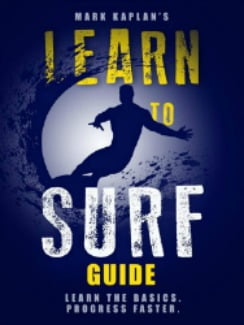Learning to Surf the Short Board
Learning to surf the short board requires patience and persistence. New surfers learn how technical surfing is just to ride a soft top in foam waves. Learning to surf the short board requires the patient building of skills and physical capabilities.
The Physical
The soft top boards have high volume to make them easy to paddle, catch waves and ride. When you subtract all the volume for a short board each of those areas become more difficult. The short board sinks under water making it difficult to paddle.
The short board won’t catch foam waves so you have to learn to catch real waves which is very intimidating. Finally, the short board will seem very unstable and the pop up and posture have to be perfect to control it.
Evolve to Surf the Short Board
On the soft top learn to catch waves, pop up properly, and ride the board to the beach. That means your posture and technique are mastered. Then ride bigger foam waves and try small real waves. Two ways to catch real waves are straight down the face or point the board at an angle towards the pocket to keep it from pearling.
The real wave increases the speed which takes adaptation. The bigger the wave, the faster you travel down the face. Now you want to ride in the pocket and not straight to shore. You start by just driving the pocket and stay on the board for as long as possible.
New Techniques
The first technique is carving a bottom turn off the face of the wave to turn into the pocket. The bottom turn will also be used to run up the face or to escape to the back side when the wave closes out.
The next carve is the cut back. The surfer reverses direction to get back to the power of the wave, for style, or to stall to wait for the wave to catch up. The third important maneuver is accelerating. The surfer moves the nose up and down the pocket with his front foot to create speed. Speed is necessary to outrun the falling lip and to do the next maneuver.
Move Shorter a Little at a Time
It is difficult to progress if you take the volume out of the board too quickly. You want to reduce length by 6″ at a time and keep width and thickness at 21+” and 2 3/4″ for long as possible. If you start with an 8′ soft top the next step is a 7’6″ fun board that will have all the right dimensions.
A short board is technically less that 6’10” so it will take time and a lot of practice to surf the short board. It more common now to find boards even under 6′ with the big width and thickness because surfers who can’t be in the water frequently want maneuverability without having to paddle too hard.
Learn More
For Oceanside Surf Lessons, see the Home Page
See the Post Surf Lessons Begin with Foam Waves
See the Post What You Learn in a 2 Hour Lesson
See the Post How to Progress in Surfing
See My Dry Land and In Water Demo video
See How to Catch a Green/Real Wave video
My New Surfing Course in an E-Book or Paperback plus Demo Video
Get the 18 Chapter,7,500 word Course that can prepare you for a lesson or give you the fundamentals if you are going to try it on your own. 10 years of teaching 350 students a year has given me the insights on the most precise measures you must follow for success. This course is what I teach on the dry land and in water instruction. The Course includes a 15 minute video on my dry land and in water demonstration. Only $4.95
Buy the E-book for $4.95. Learn to Surf (Different cover but same book)
Buy the Paperback on Amazon $7.95
Buy the E-Book and start learning. Learn to Surf
